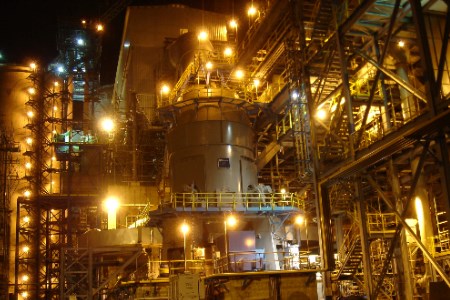Greener cements – what are we waiting for?
Published by Evie Gardner,
Editorial Assistant
World Cement,
John Terembula, FLSmidth, discusses ways to reduce the clinker factor using existing technologies and materials.

Cement is central to meeting many of the world’s sustainable development goals. But it is also responsible for around 7% of global carbon emissions. With the world’s cement producers united in their commitment to achieve net zero cement by 2050, it is time to act.
While the potential of carbon capture and storage (CCS) technology has many feeling hopeful about the ability to meet those goals, commercial scale carbon capture in the cement industry is years away. Besides which, carbon emissions from the cement process will need to be reduced significantly before such technology can be fully effective. This work has already begun but must ramp up if the industry is to meet its environmental goals.
Three clear pathways to reduced carbon
There are three clear pathways to reducing carbon emissions from the cement process, all of which are available to the cement industry right now:
- Reducing the clinker factor.
- Reducing energy consumption.
- Reducing fossil fuel use.
Reducing the clinker factor with SCMs
Embodied emissions from the calcination of clinker can be reduced simply by using less clinker. But clearly, this cannot be done at the cost of cement quality. Supplementary cementitious materials (SCMs) can be used in place of clinker to produce cement with a lower carbon footprint and a similar cement quality.
The UNEP-sponsored white paper ‘Eco-efficient cements: Potential economically viable solutions for a low-CO2 cement-based materials industry’ suggests a reasonable worldwide average clinker factor of 0.60 is achievable by 2050 (against a 2017 global average of 0.78). This demonstrates the importance of SCMs in helping the cement industry achieve net zero.
To make headway on these goals, careful consideration must be given to the properties of the SCMs in question – especially regarding grinding. The grinding operation is integral to achieving the necessary particle size distribution for optimum cement strength.
Types and availability of SCMs
A wide variety of SCMs are available, depending on location. These include:
- Granulated blast-furnace slag – a by-product of steel production, which can be substituted up to 100%.
- Fly ash – a by-product of coal combustion.
- Calcined clays – widely available and easy to use.
- Natural pozzolans – availability and quality vary depending on location.
- Limestone – regularly used in quantities up to 35% and can be used in higher quantities with proper grinding.
The use of SCMs varies from region to region, according to what is available locally and the acceptance by local authorities. Regulatory approval can be a hurdle to overcome for cement producers looking to reduce the clinker factor, but end user buy-in is equally important. In the US, for example, ASTM C595 and AASHTO M 240 defined Portland-Limestone Cement, Type IL, with up to 15% limestone in blended cement specifications, way back in 2012. Cement quality can be maintained when adding limestone in these quantities, making it an easy way for cement producers to a) reduce the carbon footprint of each tonne of cement and b) make more cement per tonne of clinker. However, it was not until almost 10 years later, in 2021, that PLC sales began to see significant growth, with USGS records showing a more than 2000% rise in blended cement shipments between January 2021 and June 2023, from 218 707 t to 4 960 573 t. This dramatic increase is in part because major end users like the Department of Transportation and the Federal Aviation Administration have accepted PLC – and where federal departments lead, others follow.
In other markets, the SCM story is taking a different direction. India, for example, already had an average clinker factor of 0.71 in 2017, thanks to the widespread use of fly ash in the cement mix. Portland Pozzolana Cement (which includes cement made with fly ash) made up 65% of the market in 2017, while Portland Slag Cement made up about 10% of the market. Both ACC and Ambuja (former Holcim-owned companies now part of the Adani Group) have been reducing the clinker factor at their plants using fly ash and slag to achieve a combined clinker factor of 0.63, with two ACC cement plants achieving a clinker factor as low as 0.44.
Enjoyed what you've read so far? Read the full article and the rest of World Cement’s December issue by registering today for free!
Read the article online at: https://www.worldcement.com/indian-subcontinent/11122023/greener-cements-what-are-we-waiting-for/
You might also like
TITAN recognised among Europe’s Climate Leaders by Financial Times
TITAN's inclusion on the list underscores its enduring commitment to environmental stewardship and sustainable business practices.

